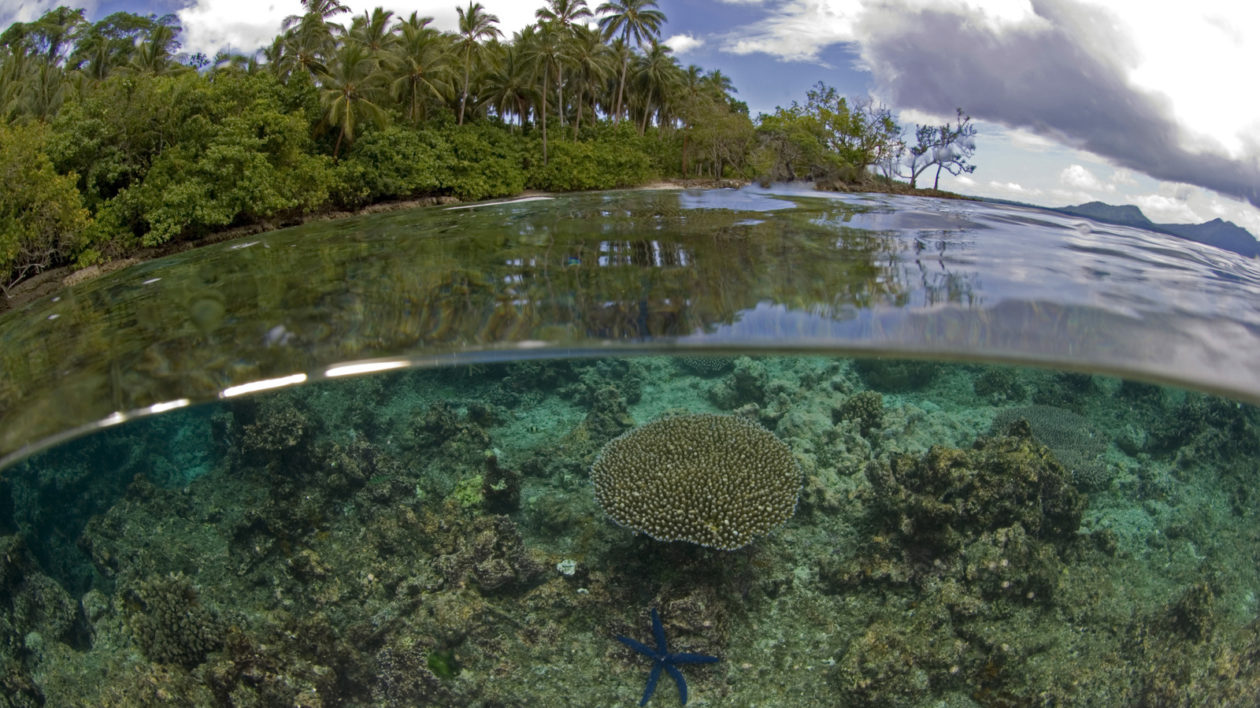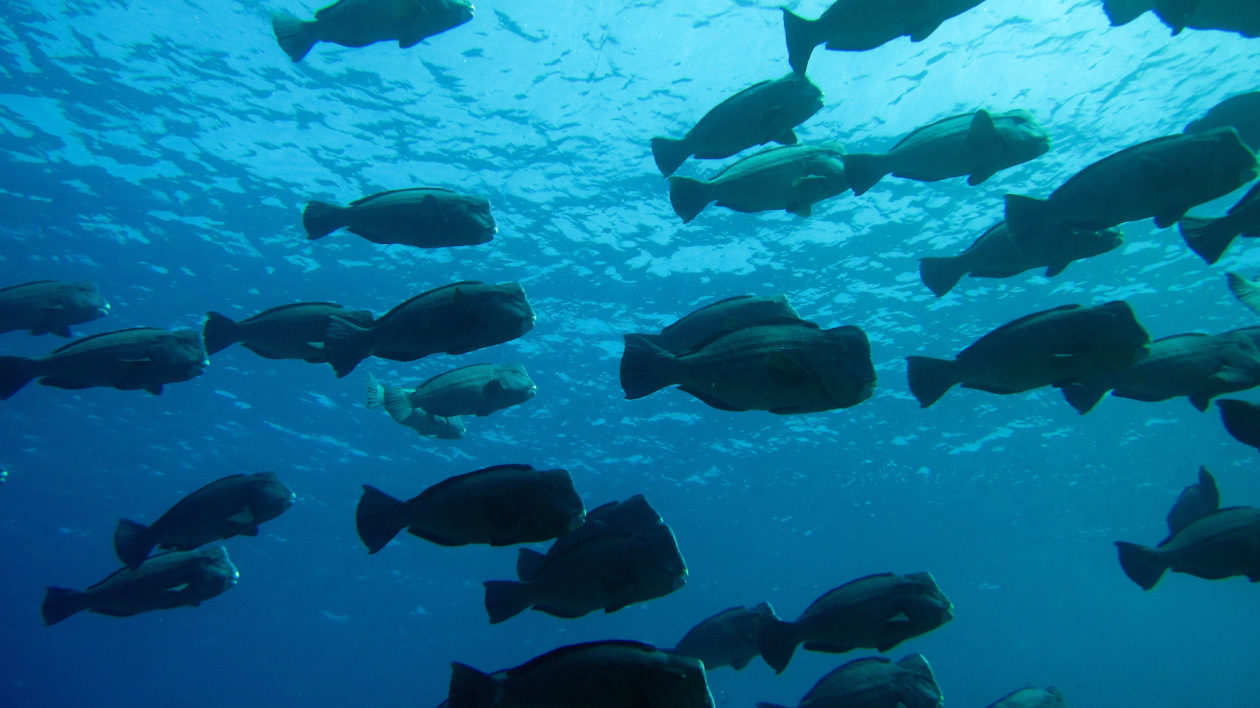New research from the Solomon Islands finds that populations of bumphead parrotfish (Bolbometopon muricatum) rely on larvae from other reefs, meaning they’re unlikely to rebound if the entire region is overfished. The results have implications for the management of this key fishery species, as well as community MPA design.
The Gist
The researchers used genetic parentage analyses and modeling to infer the dispersal patterns of bumphead parrotfish larvae in the fishing grounds surrounding Kia, in the Solomon Islands. They found that 66 percent of larval recruitment to the Kia fishery came from reefs up to 85 kilometers away, while 34 percent was spawned locally. The research also found that heavily fish areas in the Kia fishing grounds produced little larvae.
“We found that overfished populations can recover if you stop fishing them, because distant populations can send rescue recruits to save that population,” says Michael Bode, a mathematician at Queensland University of Technology and co-author on the research.
The researchers also estimated adult B. muricatum populations based on historical and current fishing pressure, and mapped the available nursery and adult habitat for the species. Those estimates allowed them to extrapolated their dispersal model to the western Solomon Islands region.

The Big Picture
Bolbometopon muricatum, locally known as topa, are a keystone reef species found in tropical waters of the Western Pacific and Indian Oceans. B. muricatum were a historically important species for subsistence fishermen in the Solomon Islands, who speared them from canoes at night by the light of burning palm fronds. Eventually, the fishery modernized, and B. muricatum populations throughout the Pacific were severely overfished by commercial spearfishing operations.
“They’re a long-lived species, they sleep in the open at night in large aggregations, and they require very specialized nursery habitat which is increasingly being destroyed by logging,” says Richard Hamilton, the Melanesia program director for The Nature Conservancy and lead author on the research. “Their biology makes them highly vulnerable to overfishing.”
B. muricatum spawns in large groups, and then the larvae travel on ocean currents for 25 days before settling in shallow mangrove lagoons. “If we want to protect this species, we have to figure out if different populations are connected through that larval phase and how different levels of regional fishing pressure affect larval supply,” says Hamilton, “because it has a lot of implications for how you manage fish stocks, design marine reserves, and regulate that fishery.”

The Takeaway
These results indicate that overfished populations can be rescued by larvae from adult populations up to 85 kilometers away — if distant healthy populations exist. “It means that populations are more resilient to local extinction,” explains Hamilton, “but the flip side is that localized marine protected areas alone won’t cut it for the species.”
For the Kia fishery, only 34 percent of larvae were spawned locally. Those results suggest that a small marine protected area around Kia won’t be enough for the population to recover from overfishing, because they rely so heavily on larvae from areas. If other regional populations are overfished, the Kia fishery has no way to recover.
Most marine protected areas in the Pacific are less than 1 square kilometer, both because communities have small tenure areas and because most of them are still subsistence fishers who rely on fishing from their local reef to supply food. That size is smaller than B. muricatum’s home range, and several magnitudes smaller than the median dispersal distance of their larvae.
Hamilton says that similar studies need to be done for other highly sought-after species, and that a participatory approach to research is critical. “The only thing that made this research possible was TNC’s long relationship with the government and with local Kia fishers, so we could harness their indigenous knowledge and support,” he says. “You can’t get the sample sizes and meaningful data from a commercial fishery over 2 weeks… it has to be a long-term, collaborative approach to field research.”




I feel the protection of the oceans and all the creatures in it is very important, fish, all fish should be protected from over fishing, hopefully this will become the norm as well as the wonderful and exotic parrott fish. Good luck!